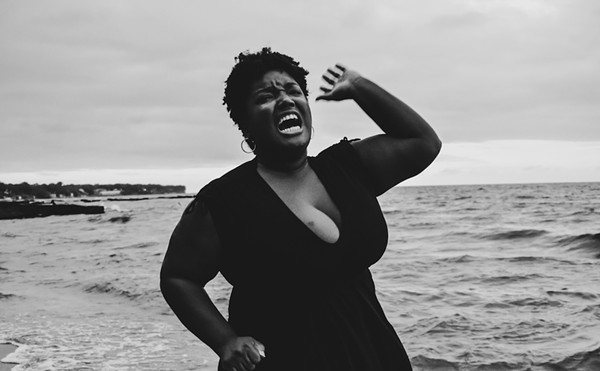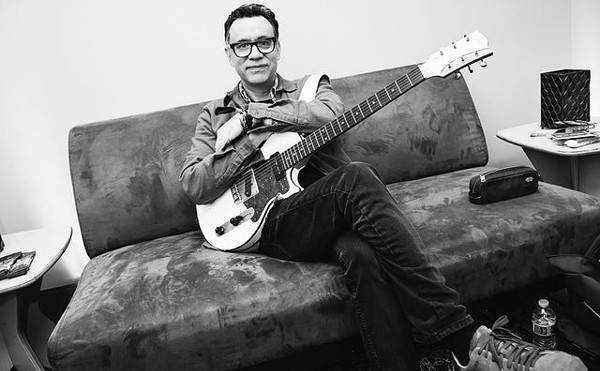With the release of this year's fall guide, we pause once again to reflect on the state of our local art community. It seems pretty cliché to start an article by paraphrasing a Bob Dylan quote, but the times indeed are changing. That's not to say they're getting worse, they're just getting different. For several years now we've heard this refrain, if not battle cry, from and about Cleveland's arts and cultural organizations large and small. In fact, some of the best and most consistent national press our city has received over the past decade has been about our arts and cultural assets.
However, lurking beneath the pristine veneer of our vibrant arts community is a murky swamp of new and ongoing political and economic agendas. The public funding of the arts is less about supporting artists than it is rebuilding the neighborhoods that earlier agendas crippled. We've seen it in Tremont, Gordon Square, Ohio City and Waterloo, and we're currently seeing it in Slavic Village and Hingetown. Decision and policy makers in all levels of government fund arts programs in an effort to create "vibrant communities." All too often those vibrant communities have more to do with $5 coffees and $7 craft beers than anything else.
Take Tremont for example. Two decades ago, Tremont was hardly the real estate lure that it is now. Rent was cheap, so artists started moving in. Eventually, empty storefronts were converted to galleries, and the artists started hosting fun, interesting events that drew attention from all across Northeast Ohio. More people meant more money, and high-end, trendy restaurants starting popping up on every street corner. Soon, every Millennial in town wanted to live in Tremont. More businesses entered, rent started rising and cheap gallery and studio space was impossible to find. Today, Tremont is a shell of its former self when it comes to visual art. The legendary Art Walk even ended after 25 and was replaced with a less-arts-focused event, "Walkabout Tremont." This, I fear, is a cautionary tale for what is happening throughout Cleveland. Local artists may be actively helping to build a city in which someday they cannot afford to live.
Between the discussion of a city-wide renaissance, and the national and international spotlights, this is a crucial time for our city as a whole, and specifically our residents. We see LeBron James offering international recognition to local businesses, and I ask: why can't we do that for our artists? Not just for one of them, but for all of them? Not a handout, but an opportunity to shine in the spotlight.
Pride in our hometown has never been higher. We wear our heart on our sleeves and our city across our chest like Superman's insignia (also from Cleveland) – a prideful symbol of home and family. This is not a time to be emphasizing international and national art – this is a time to show our pride in the people living and working in Northeast Ohio. It seems pretty simple – when have you ever seen the whole city so proud of itself and its people? And yet it seems that every time a big, bright national media spotlight shines over Cleveland, local artists are being pushed aside to bring in national and international artists. Of course, the city has always welcomed guests from all over, but we should be seizing this moment to showcase the talents of our city.
Recent and upcoming examples of this emphasis on outside artists include virtually every major project. With the current round of international artists brought to Cleveland by the Cleveland Foundation, its Creative Fusion program shifts its focus from art-making to place-making and gentrification in Ohio City's "Hingetown." Even those 376 colorful, plastic animals LAND Studios placed around town before the RNC were commissioned from a company based in Italy.
Another important point to note is the state of Cleveland's art economy. Although there are many grant opportunities available, as well as an oversaturation of both artists and venues, gallery sales and commissions continue to elude most artists and galleries. And yet, artists are frequently asked to donate their time and work to their local arts organizations who are paying their national and international artists-in-residence. Thanks to free admission, free drinks and free food, galleries continue to host spectacular receptions, but often without a single sale. Artists may spend a year or two working on a solo show and only sell a few hundred or few thousand dollars' worth of work – and sometimes nothing at all. Gallery owners fear that charging admission would discourage attendance, so they consistently lose money to throw a great party. Sure, it's fun, but it's not sustainable. Inevitably, most commercial galleries tend to last about three years – although many with independently wealthy owners or "side hustles" can last much longer.
Of course, there are many positive things happening in our arts and culture sector. For evidence of the public's approval, we need look no further than last November's landslide renewal of Cuyahoga County's cigarette tax – which won by a 75.2 percent margin.
Two years ago, a study out of Chicago by the Cultural Policy Center and the National Opinion Research Center found that Cuyahoga County received more total artsfunding from federal, state and local sources in the decade from 2002 to 2012 than the other 12 metropolitan areas included in the study (New York was not measured due to issues with data collection). The study found that Cuyahoga County received $18 million in public grants – $1.7 million more than second place Miami Dade-County, home of the country's hottest art fair, Art Basel. It may seem like a lot, but this is only a small fraction of these organizations' estimated budget – exceeding $300 million in Cuyahoga County alone.
So what did $300+ million get us? Well, a recent study by the Community Partnership for Arts and Culture (CPAC) compiled statistics on community and economic impact in Cuyahoga County in 2015. CPAC found that the 99 arts and cultural non-profit organizations studied provided 60,000 public performances, 22,000 film screenings, 29,000 tours and 5.4 million "cultural encounters," 44 percent of which were free.
Those are amazing numbers. The next time you see an artist who helped make that happen, thank them. Better yet, offer them a paying gig.











